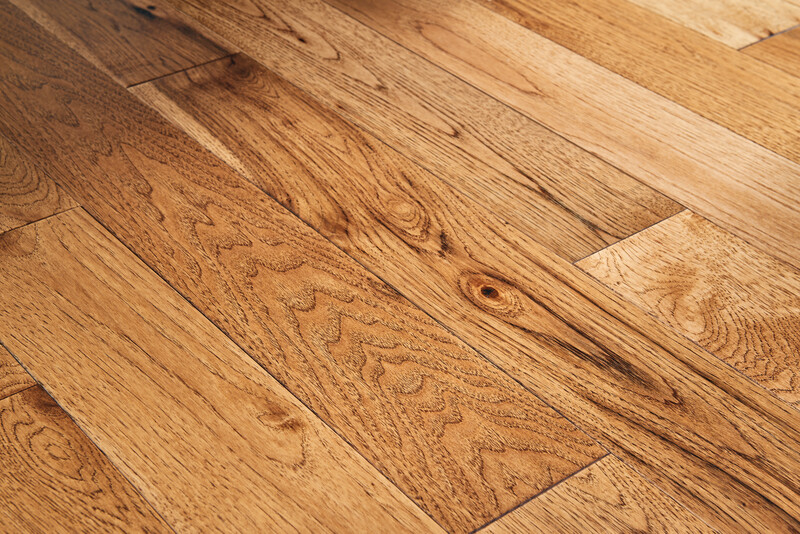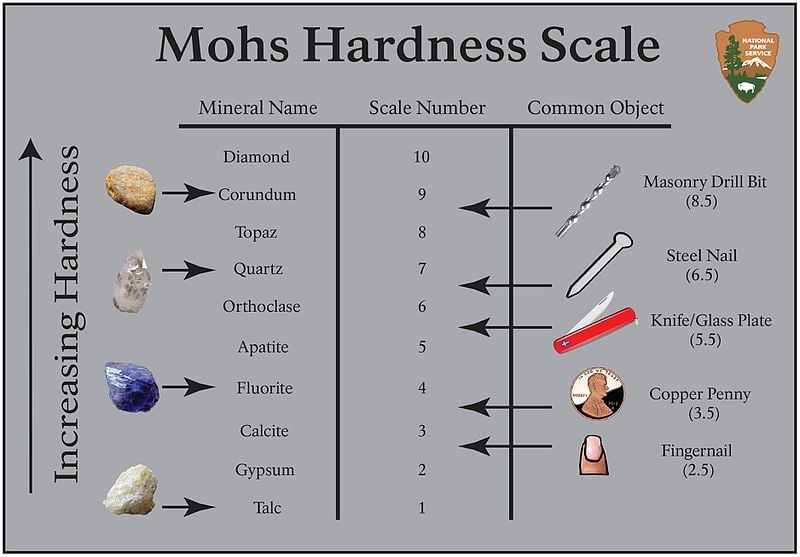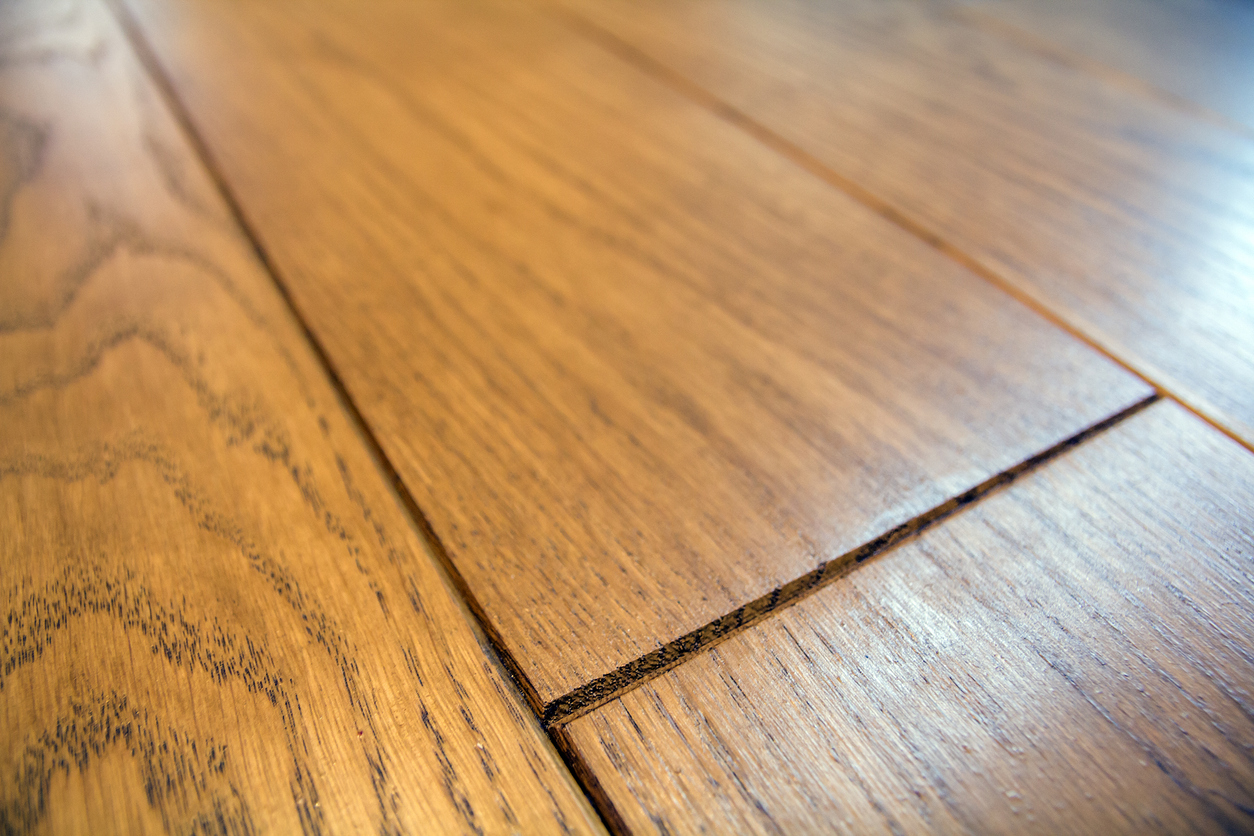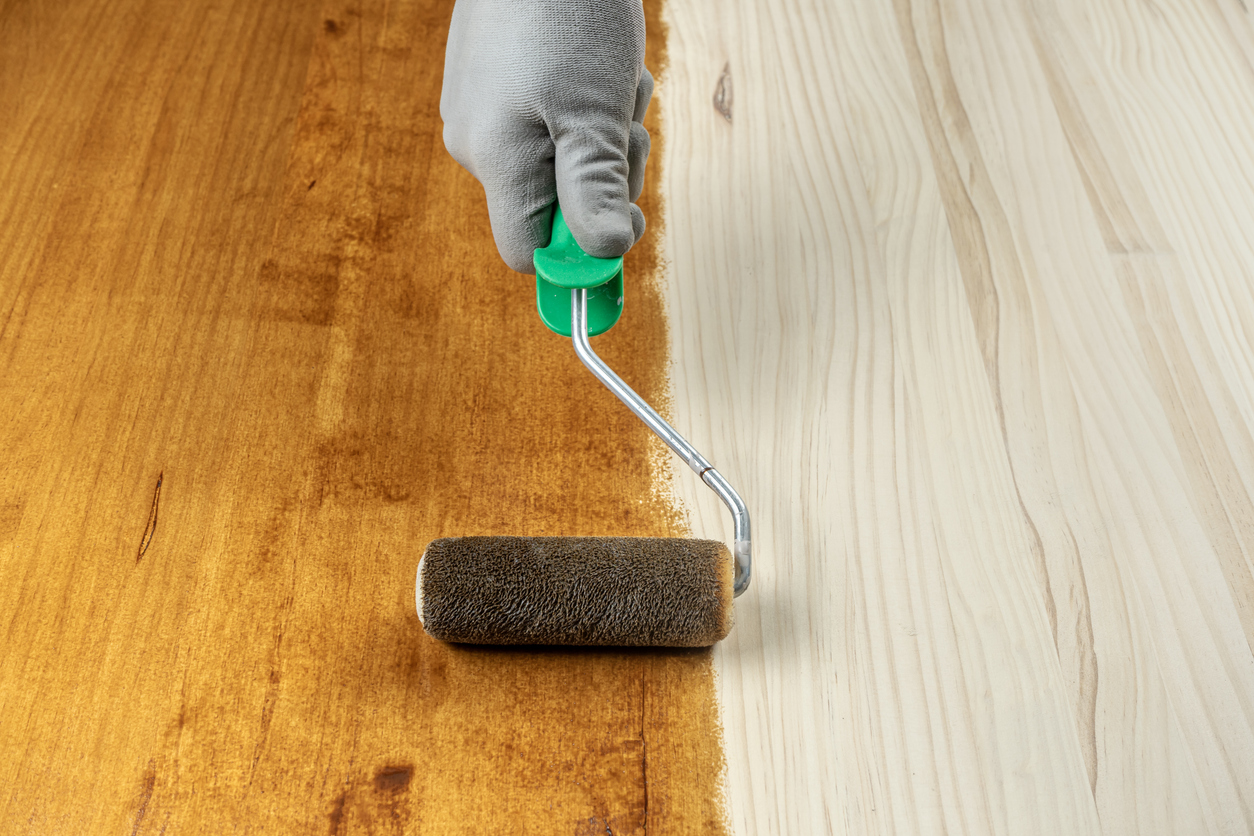Prefinished Hardwood Flooring – A Homeowner’s Guide
Hardwood flooring is a considerable investment. One of the first decisions you’ll face is whether to go with prefinished or unfinished wood.
Prefinished hardwood flooring comes ready to install. The manufacturer handles the sanding, staining, and sealing. All of this takes place at the factory under controlled conditions. Compare that to unfinished flooring, where your installer does that work on-site.
This guide provides detailed information about prefinished floors. It also highlights important considerations to keep in mind before installing them in your home.
So let’s dive into it. We’ll start by providing some quick answers to frequently asked questions about prefinished hardwoods.

Common Questions About Prefinished Hardwood Flooring
Can prefinished hardwood floors be refinished?
Yes, but it depends on the floor. Typically, you can refinish solid, prefinished hardwood, although it’s more challenging due to the tough factory coatings. You can only refinish engineered wood if the wear layer is thick enough — typically 3mm or more.
Is prefinished hardwood better than unfinished?
Not always — it’s just better for specific needs. For speed, minimal mess, and strong durability, prefinished is an excellent choice. However, for total control over color, sheen, or a seamless look, unfinished may be the better fit.
Does prefinished hardwood scratch easily?
No — it’s more resistant to scratches than site-finished floors, thanks to tough aluminum oxide coatings. That said, no hardwood is scratch-proof; protective pads, rugs, and regular maintenance are helpful.
How long do prefinished hardwood floors last?
Most prefinished hardwood floors last 25–30 years, and some come with warranties of up to 50 years. Longevity depends on the wood species, the quality of the finish, and the level of maintenance.
What’s the difference between solid and engineered prefinished hardwood?
Solid hardwood is a single piece of wood throughout its entire length. Engineered hardwood has a hardwood top layer over plywood or composite layers. Engineered wood offers better stability from contraction and expansion when exposed to moisture. You can refinish both hardwood flooring options, but only thicker engineered floors allow for complete sanding and refinishing.
With these top-level questions addressed, let’s dig deeper to provide a more precise look into prefinished flooring.
What Is Prefinished Hardwood Flooring?
To expand on our initial comments, manufacturers create prefinished hardwood flooring from real wood. They sand, stain, and seal the flooring at the factory.
That means the boards arrive ready to install with a hardened, protective finish already applied. This finish is no joke — aluminum oxide creates one of the hardest, most wear-resistant surfaces available. Cured under UV lights in a controlled setting, the finish is far tougher than anything applied on-site.
The Mohs Hardness Scale
To give you a notion of how tough it is, aluminum oxide is second only to diamonds for hardness. The Mohs hardness scale rates diamonds as a 10, compared to aluminum oxide at 9.
Conversely, workers install unfinished hardwood raw and then finish it on-site. That approach does provide more customization options, but also brings more mess, odor, and time to the job.
Prefinished wood flooring is all about delivering a ready-to-use solution. You can walk on the floor the same day you install it. You encounter no drying time, no dust storms, and no strong fumes in your home.

Source: National Park Service
What’s the Difference Between Prefinished and On-Site Finished Hardwood?
Trying to decide between prefinished and unfinished hardwood? Here’s a quick side-by-side breakdown of the key differences to help you weigh your options. Use this chart to compare installation time, finish quality, customization options, and long-term maintenance requirements.
| Feature | Prefinished Hardwood | Unfinished Hardwood |
| Finish Applied | In factory | On-site after installation |
| Installation Time | Faster | Slower (needs sanding/finishing) |
| Odor/Mess | Minimal | Stronger fumes, more dust |
| Customization | Limited | High (stain, sheen, color) |
| Seamless Look | Visible board edges | Seamless after finishing |
| Scratch Resistance | High (aluminum oxide finish) | Moderate (polyurethane or oil) |
Is Prefinished Hardwood Better?
It depends on your priorities.
Prefinished hardwood is factory-finished under controlled conditions using durable, commercial-grade coatings. This often means:
- A more consistent finish
- Faster installation (no sanding or staining needed on-site)
- Less mess and odor
However, because the flooring comes finished, you have less flexibility to create a custom color or stain. You get what the manufacturer elects to generate. Now, that’s not a bad thing, as prefinished hardwoods come in all kinds of species and colors.
With unfinished hardwood, you can choose the exact stain, sheen, and finish. You can achieve a seamless look because the finish happens after installation.
Verdict: For convenience, speed, and durability right out of the box, prefinished hardwood is likely the better choice. For a custom finish with more disruption during installation, unfinished may be worth it.
Do Prefinished Hardwoods Scratch Easily?
No floor is completely scratch-proof, but prefinished hardwoods are highly resistant to scratches and wear. Most have multiple layers of aluminum oxide coating. As presented, that’s a much harder finish than the polyurethane used in site-finished floors.
Still, no finish can stop deep gouges from heavy furniture, pet claws, or high heels. Area rugs, furniture pads, and regular cleaning go a long way in protecting the surface.
For ultimate resistance to scratches, consider hardwood flooring, such as Timber Tones™.
How Long Do Prefinished Hardwood Floors Last?
With proper care, prefinished hardwood floors can last 25–30 years or more. Some premium options come with 50-year warranties. Some manufacturers, like Robbins®, even warrant their Natural Forest™ prefinished hardwood for a lifetime.
Keep in mind, longevity depends on:
- Wood species (harder woods like oak and maple last longer)
- Traffic level
- Maintenance routine
Can You Sand and Refinish Prefinished Hardwood Flooring?
Yes — but with some caveats.
You can sand and refinish most prefinished solid hardwood floors. However, it’s usually more challenging than refinishing site-finished floors. That’s because:
- The factory finish is much tougher. Aluminum oxide and UV-cured coatings resist wear, which also makes them more challenging to sand through.
- Beveled edges remain visible. Even after sanding, the micro-beveled grooves between boards may not completely disappear, especially if they’re deep.
- It takes longer and costs more. Contractors often charge more to refinish prefinished wood due to the added labor and wear on their equipment.
Prefinished Engineered Hardwoods
If you’re dealing with prefinished engineered hardwood, refinishing depends on the thickness of the wear layer:
- A wear layer of 2mm or less is unlikely to handle sanding; you can only screen and recoat it.
- With a wear layer of 3mm or more, you can usually sand and refinish the flooring once, maybe twice.
Bottom line: If you anticipate refinishing your floor later, pick a solid or engineered floor. Ensure it has a thick wear layer for this purpose.
Pros of Prefinished Hardwood Flooring
If you’re after convenience, durability, and a clean installation process, prefinished hardwood offers a lot to like. Here’s why it works well for many homeowners:
1. Quick and Easy Installation
Prefinished floors arrive ready to go — sanded, stained, and sealed. That cuts installation time dramatically. Contractors can typically complete a job in one to two days. That avoids the wait time and disruption associated with in-home sanding, staining, and drying.
2. No On-Site Fumes or Dust
Installing unfinished hardwood means sanding and sealing on-site, which can fill your home with fine dust and strong chemical smells. Prefinished flooring skips all that. The process is much cleaner with less prep and post-install cleanup.
3. Extremely Durable Finish
Factory finishes often use aluminum oxide or ceramic-infused urethanes. Cured under UV lights, they achieve maximum hardness. These finishes are typically more scratch- and wear-resistant than those achieved through on-site finish application. That makes prefinished floors ideal for high-traffic areas, homes with pets, and busy families.
4. Consistent Color and Sheen
Because the finishing occurs in a controlled factory setting, you achieve uniform coloration and gloss across every board. That’s infinitely more challenging to accomplish during on-site finishing, especially in large rooms or varying light conditions.
5. Warranty Coverage
Many prefinished hardwoods come with long-term warranties — sometimes up to 50 years — that cover wear-through of the finish. Site-finished floors usually don’t have this kind of protection unless you’re working with a specialty contractor.
Cons of Prefinished Hardwood Flooring
As with any product, prefinished hardwood has its trade-offs. These are the downsides to keep in mind before you commit:
1. Micro-Beveled Edges Show Gaps
To prevent damage during transport and installation, most prefinished boards have micro-beveled edges. These small grooves can collect dirt and slightly interrupt the seamless look that many people expect from hardwood. In contrast, flooring contractors sand site-finished floors to a flat surface after installation, creating a smooth, uniform finish.

2. Limited Customization
With prefinished flooring, what you see is what you get. You can only select the colors, stains, and finishes offered by the manufacturer. For a custom stain blend or a specific texture, you’ll have fewer options — or pay more for specialty lines.
3. Harder to Refinish
Eventually, all hardwood floors may need refinishing. Prefinished boards can be more difficult and labor-intensive to sand down, especially those with tough aluminum oxide coatings. Additionally, some engineered prefinished floors have thin wear layers, which limit the number of times they can be refinished.
4. Slightly Higher Material Cost
Prefinished hardwood can cost more upfront per square foot than unfinished boards. While installation is cheaper (because it’s faster), the material itself includes the cost of factory finishing.
5. Board Replacement Can Be Tricky
If a prefinished board becomes severely damaged, replacing it without disturbing the surrounding floor can be a challenging task. With a site-finished floor, repairs and touch-ups can blend in more effectively. Prefinished boards may have visible seams or mismatched gloss if not replaced carefully.
Prefinished Hardwood Flooring – The Bottom Line
Prefinished hardwood floors are a wise choice for most homeowners who want speed, durability, and low maintenance. If you don’t need a custom color or smooth finish, prefinished boards offer great convenience and quality.
To help you decide whether prefinished hardwood is right for you, ask yourself:
- Do I want a fast and clean installation?
- Are visible seams between boards acceptable to me?
- Do I need a specific stain or finish?
Your answers will steer you in the right direction.
Trust Robbins® for a Quality Selection of Prefinished Hardwoods
Looking for a trusted brand? Robbins offers an extensive selection of prefinished hardwood flooring. You can select from numerous species, including ash, cherry, hickory, maple, pine, oak, and walnut. You can also achieve different looks, such as wide planks, rustic, traditional, and distressed wood.
Find the perfect prefinished room for your space by visiting a Robbins retailer near you.

